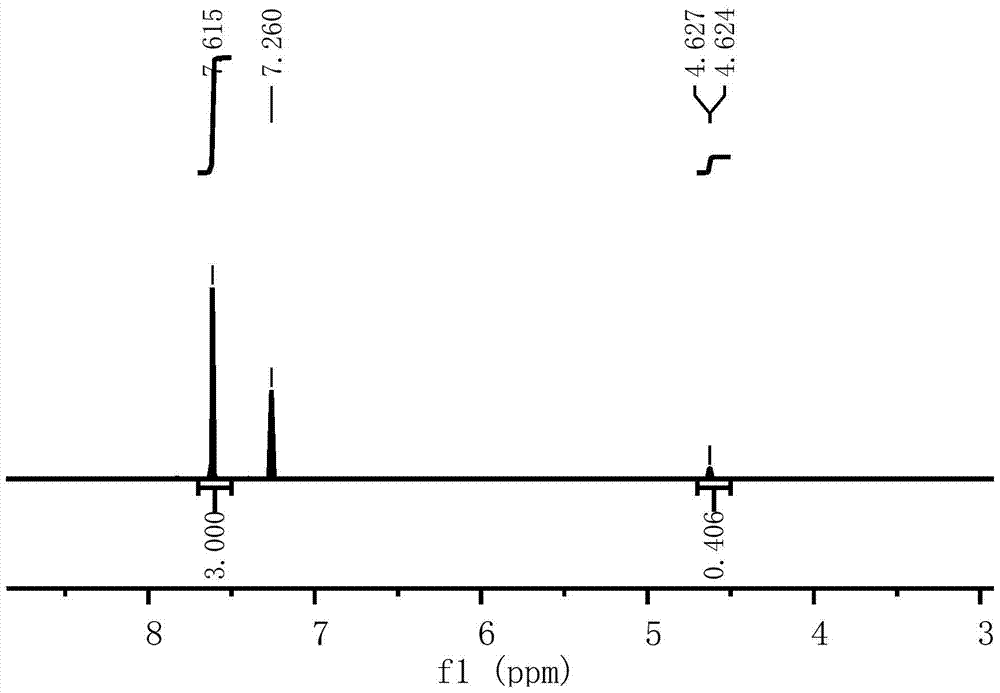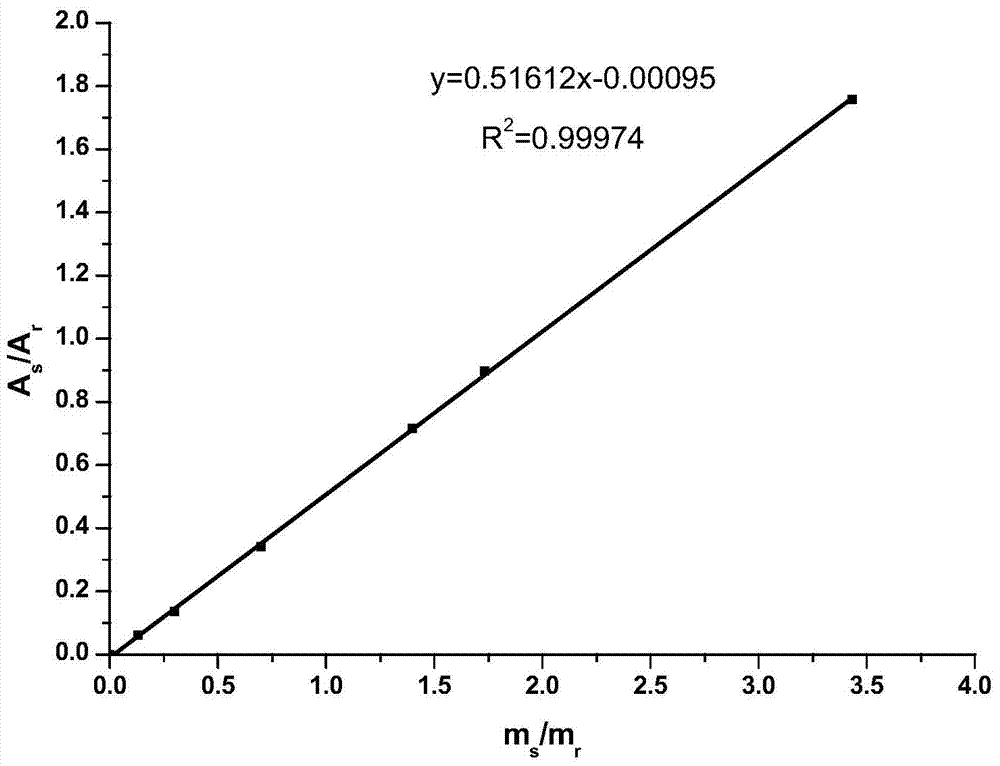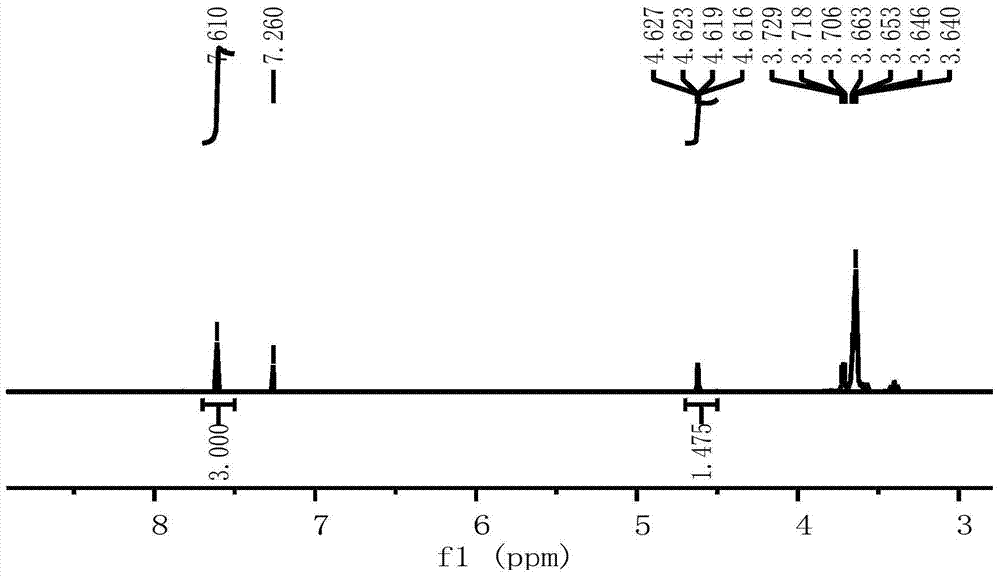Method for Determination of Hydrogen-containing Silicone Oil Residue in Trisiloxane Surfactant by One-dimensional Proton Nuclear Magnetic Resonance Spectroscopy
- Summary
- Abstract
- Description
- Claims
- Application Information
AI Technical Summary
Problems solved by technology
Method used
Image
Examples
Embodiment 1
[0060] Determination of MD by one-dimensional proton NMR spectroscopy and chemical method H Consistency analysis of M hydrogen content:
[0061] In order to verify the feasibility of using the one-dimensional hydrogen nuclear magnetic resonance spectrum internal standard method to measure the hydrogen content of hydrogen-containing silicone oil, the present invention uses chemical titration to measure the hydrogen content of hydrogen-containing silicone oil as a comparison, and also in the determination of other embodiments The chemical titration method was also used as a comparison.
[0062] Reagents used and sample preparation: MD with a purity of 99% H M was purchased from West Asia Reagent Company, 99.9% deuterated chloroform (CDCl 3 ) were purchased from CIL (Cambridge Isotope Laboratories, Massachusetts, USA). Sodium thiosulfate (AR), potassium iodide (AR), soluble starch (AR) and concentrated sulfuric acid (AR) were purchased from Tianjin Damao Reagent Factory, potas...
Embodiment 2
[0079] Determination of residual MD in trisiloxane surfactants with an average molecular weight of 612 H M content
[0080] During the actual storage and production process, MD H M will produce hydrogen after standing for a period of time. Due to the residual MD in the production of trisiloxane surfactant H M, a certain amount of MD remains H M can cause the bag to bulge or even rupture. Therefore, the MD in the trisiloxane surfactant H The detection of M content plays an important guiding role in production.
[0081] When determining the content of hydrogen-containing silicone oil in trisiloxane surfactant, MD can be expressed by the hydrogen content H The size of the M residue.
[0082] Preparation of internal standard solution: Weigh 0.0600g of 1,3,5-tribromobenzene into a 5mL volumetric flask, add deuterated chloroform and ultrasonically dissolve, dilute to 5mL with deuterated chloroform, the concentration is 12mg / mL, pipette Take 0.25mL of the standard solution in...
Embodiment 3
[0085] Embodiment 3: Determination of the expansion of the hydrogen-containing silicone oil residual method in trisiloxane surfactants of different molecular weights
[0086]In order to further verify the feasibility of the method for determining the residual amount of hydrogen-containing silicone oil in trisiloxane surfactants, the present invention uses trisiloxane surfactant mixtures with different numbers of EO chain members as quantitative research objects. The preparation and pipetting of the internal standard solution were consistent with Example 2. The preparation and pipetting of the sample solution were consistent with Example 2.
[0087] Test according to the above-mentioned NMR test conditions to obtain a one-dimensional proton nuclear magnetic resonance spectrum, such as Figure 4 Shown is the one-dimensional proton nuclear magnetic resonance spectrum of the trisiloxane surfactant whose average molecular weight is 674. The results of three parallel determination...
PUM
 Login to View More
Login to View More Abstract
Description
Claims
Application Information
 Login to View More
Login to View More - Generate Ideas
- Intellectual Property
- Life Sciences
- Materials
- Tech Scout
- Unparalleled Data Quality
- Higher Quality Content
- 60% Fewer Hallucinations
Browse by: Latest US Patents, China's latest patents, Technical Efficacy Thesaurus, Application Domain, Technology Topic, Popular Technical Reports.
© 2025 PatSnap. All rights reserved.Legal|Privacy policy|Modern Slavery Act Transparency Statement|Sitemap|About US| Contact US: help@patsnap.com



